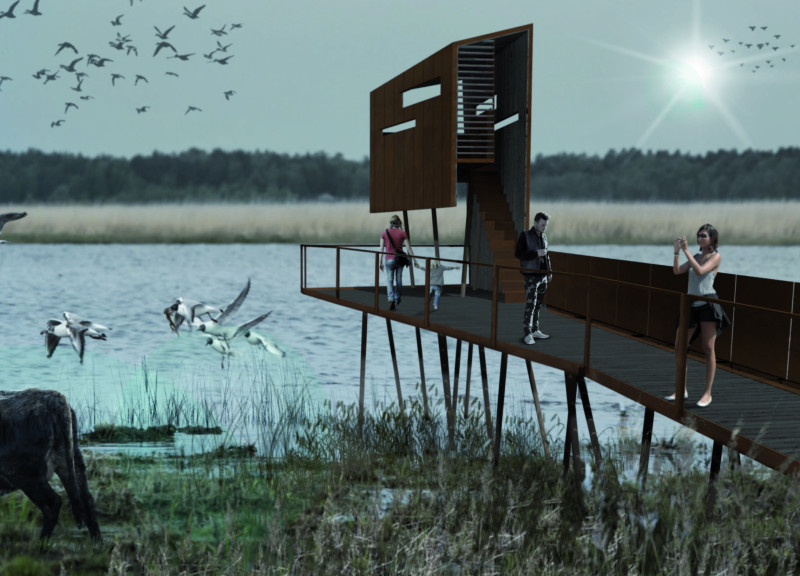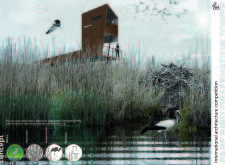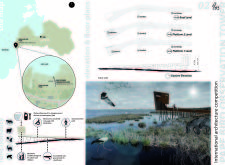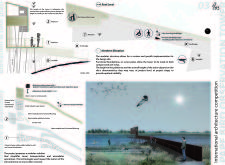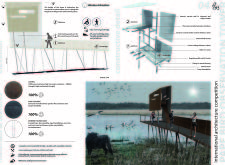5 key facts about this project
The design of the observation tower is characterized by its modular form, which allows it to respond effectively to the unique ecological characteristics of the site. Elevating visitors to an optimal height of approximately 8.0 meters, the structure ensures unobstructed views across the park's expansive wetlands, fostering a deeper connection between humans and the natural environment. The thoughtful arrangement includes several observation platforms at different heights, catering to diverse user groups and enhancing accessibility.
One of the most important aspects of this project is its connection to the landscape. The tower features a footbridge that extends approximately 50 meters, ensuring safe and direct access while offering visitors panoramic views of the surrounding flora and fauna. This thoroughfare not only aids in navigation but also enhances the overall experience by allowing visitors to engage with the ecosystem more intimately as they approach the observation points.
Materiality plays a key role in both functionality and aesthetics in this project. The use of Corten steel serves to provide strength and durability, while its weathered appearance allows the structure to blend with the natural elements of the park. Incorporating heat-treated and oiled wood further emphasizes sustainability and adds a warm, inviting texture to the design. Additionally, the use of Shou Sugi Ban, a traditional Japanese method of wood preservation, contributes to the longevity of the structure while maintaining an environmentally sensitive approach.
A notable design approach is the implementation of Krinner foundations, which minimizes soil disruption during installation. This technique aligns with the project's commitment to ecological preservation, ensuring minimal impact on the wetland environment. The careful selection of materials underscores the project's dedication to sustainable architecture, aiming to reduce the carbon footprint and encourage responsible interaction with nature.
The tower also incorporates educational components through strategically placed information panels that provide insights into local wildlife and promote awareness of conservation issues. This aspect is vital in fostering an interactive and enriching visitor experience, turning simple observations into learning opportunities. By engaging visitors through educational content, the tower broadens its role beyond just a physical structure; it becomes a means to inspire stewardship of the environment.
The Pape Bird Observation Tower stands as a reflective example of modern architectural design that emphasizes harmony with the environment while fulfilling practical needs. Its unique features and thoughtful approaches demonstrate a commitment to sustainability and ecological sensitivity. The architecture of the tower encourages users to immerse themselves in the beauty of the natural world, providing a space where observation, education, and enjoyment converge harmoniously.
For those interested in exploring this project more thoroughly, detailed architectural plans, sections, designs, and innovative architectural ideas are available for review. Engaging with these elements will provide a comprehensive understanding of how architectural principles have been applied to enhance visitor experiences while respecting the ecological integrity of Pape Nature Park.


